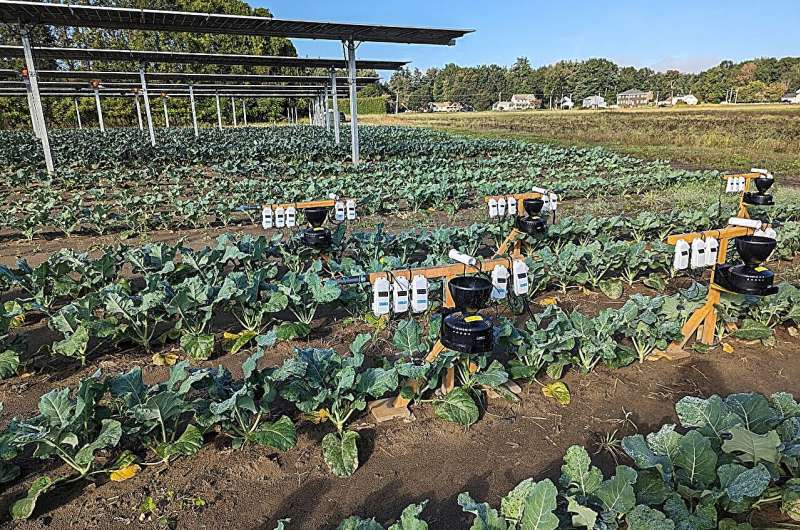
October 10, 2024 by University of Massachusetts Amherst
Collected at: https://phys.org/news/2024-10-analysis-tools-farmers-choice-agrivoltaics.html
The dual use of land for agriculture and solar energy production, known as agrivoltaics, presents a new opportunity for farmers, but whether it makes economic sense for growers is a complex question. A new set of analytical tools developed by researchers at the University of Massachusetts Amherst and published in the Journal of Extension helps farmers make an informed choice.
“It’s a big, big decision,” says lead author Jill Fitzsimmons, research assistant professor of resource economics and affiliated faculty member at the Center for Agriculture, Food and the Environment (CAFE) at UMass Amherst. “We wanted to come up with a tool that farmers could use to spitball whether solar is right for them. This helps farmers and those who support them think about the practical considerations of pursuing agrivoltaics.”
The two spreadsheet-based tools can be used together or separately to assist farmers, extension educators and others who support the sector in determining whether or how to best incorporate utility-scale solar arrays into farming operations. The spreadsheets estimate costs, revenues and yields from agricultural production under different solar configurations. The tools are designed for lettuce and cranberry production, but can be modified easily for other field and perennial crops.
The spreadsheets consist of a crop-specific logbook to analyze farm-level activities and a whole-farm tool to calculate aggregate projections for trade-offs between crop production with or without agrivoltaics. Together, the spreadsheets consider everything from different solar technologies and crop spacing to labor costs and extra fuel to navigate farm equipment around solar panels.
The tools are designed to complement InSpire, a project managed by the National Renewable Energy Laboratory, which helps farmers estimate revenue and energy production from solar installations.
The U.S. Department of Energy has set a goal of covering 10.3 million acres of land with ground-mounted solar installations by 2050 to meet energy production targets. The agency proposes meeting those benchmarks with the help of agrivoltaic arrays. However, the potential effects of this approach on crop yield and farm finances are poorly understood.
While there’s still much research to be done on agrivoltaics, Fitzsimmons says early indications from field trials are that some crops do better than others under solar arrays, and that performance varies with each year’s weather patterns.
The spreadsheets were developed as part of a larger ongoing project in which researchers from CAFE and its Clean Energy Extension are working with farmers across Massachusetts to determine how co-located solar arrays affect agriculture.
“Agrivoltaics—and farming itself—come in so many shapes and forms that there’s no one-size-fits-all answer as to whether solar is the right choice,” explains Dwayne Breger, director of the Clean Energy Extension and extension professor of environmental conservation at UMass Amherst. “But what we hope to do is provide farmers with the science to decide if it’s right for them.”
The commonwealth is a laboratory of sorts, given its unique incentives for agrivoltaics. Close to a dozen such projects have been built or are under construction, with roughly the same number in the planning stages.
More information: Jill Fitzsimmons et al, Agrivoltaic Decision Tools for Perennial and Field Crop Farmers, Journal of Extension (2024).

Leave a Reply